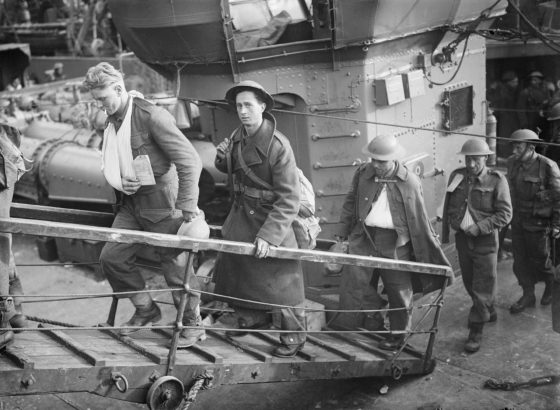
“McCrea was selected for these vastly different assignments for one reason: He had the right stuff to take on great responsibility.”
By Julia C. Tobey
FEW NAVAL OFFICERS can boast a career as distinguished as that of Vice Admiral John L. McCrea (1891-1990). Early highlights included service in the First World War, aide to the first commander-in-chief of the Pacific Fleet, multiple ship commands, two law degrees and JAG Office duty, executive of the U.S. Fleet flagship, and senior aide to the chief of naval operations. But McCrea’s performed his most outstanding service is two very different jobs during World War Two.
In the first year of the war, he served as naval aide to Franklin D. Roosevelt. At the White House, he set up and ran the Map Room, the president’s wartime communications and information center. It was his duty to kept FDR up-to-date on developments overseas. He also performed a myriad of other tasks ranging from diplomat, manager, and presidential agent to errand boy, protector and companion.

In 1943, McCrea, 52, embarked on a new career path – one that would take him much closer to the action. In February of that year, he left the White House to become the first commanding officer of the USS Iowa, the country’s newest and largest battleship. In 16 months, he established the ship’s organization, tested her performance and design, and trained a crew of nearly 3,000. Subsequently, he transported FDR and the joint chiefs of staff to North Africa across an Atlantic teeming with German U-boats, and fought Iowa in the Pacific as part of the Fast Carrier Task Force. McCrea was selected for these two vastly different assignments for one reason: He had the right stuff to take on great responsibility.
McCrea was born in Marlette, Michigan on May 29, 1891. His father, a doctor, had no military connections. McCrea’s school years were undistinguished. He was rudderless at his graduation. He visited the U.S. Naval Academy in Annapolis, Maryland and was offered the chance to take the entrance exam. After passing the test, he enrolled and never looked back. He graduated in 1915.

With his erect bearing and air of authority, McCrea looked like a naval officer. Personally, he was charming, with a fine sense of humor. He enjoyed people, understood them, and was a gifted raconteur. He was nominated as naval aide in part for his personality, that was deemed by many to be a good match with FDR.
Despite having no formal training, McRae excelled in his White House role. Performing unfamiliar duties with little or no guidance was something he was used to however. Earlier in his career, the Pacific Fleet commander made McCrea personnel officer. Despite his inexperience and an acute manpower shortage, he managed to keep the fleet’s ships staffed and functioning. The ability to perform an unfamiliar task under pressure was a skill that McCrea would call upon frequently at the White House.

Starting in 1940, McCrea served as aide to the chief of naval operations. He showed judgment and discretion on a top-secret mission to deliver the navy’s revised Japanese war plans to the fleet commanders in the Pacific. He also prepared a study on the navy’s preparedness for war. Following the Japanese attack on Pearl Harbor, McCrea’s knowledge of the navy and its war plans made him an ideal choice for naval aide to a wartime president.
A commander requires a different skill set than an aide. As early as the Naval Academy, McCrea showed a gift for command. He led by example and took a personal interest in his men and their well-being. In turn, got results from his officers and crew. He once took command of a failing destroyer and turned the ship into a top performer in less than a year. McCrea also showed independence and judgment. In 1939, as executive officer of the U.S. Fleet flagship, he recognized that America might soon be at war and trained accordingly. Most, including senior officers, thought him an alarmist. By 1943, the navy had no qualms about entrusting the new ship to McCrea.
 Captain McCrea’s War: The World War II Memoir of Franklin D. Roosevelt’s Naval Aide and USS Iowa’s First Commanding Officer by Vice Admiral John L. McCrea is published by Skyhorse Publishing, New York, New York. It’s edited with an Introduction by Julia C. Tobey and features a foreword by Craig L. Symonds.
Captain McCrea’s War: The World War II Memoir of Franklin D. Roosevelt’s Naval Aide and USS Iowa’s First Commanding Officer by Vice Admiral John L. McCrea is published by Skyhorse Publishing, New York, New York. It’s edited with an Introduction by Julia C. Tobey and features a foreword by Craig L. Symonds.









